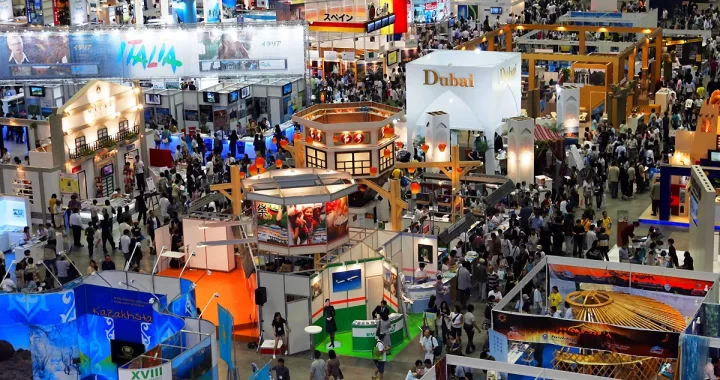Post-Pandemic Health and Safety Protocols for Events: The New Blueprint

Remember when the biggest worry at a conference was the coffee running out? Yeah, things have changed. The pandemic didn’t just pause the events industry; it fundamentally rewired our collective psyche around gathering. And honestly? That’s not all bad.
Today’s attendees don’t just expect a great agenda. They demand a baseline of safety that feels both visible and seamless. It’s no longer about crisis management. It’s about building trust from the ground up. Let’s dive into what that actually looks like now.
Shifting from Panic to Permanence: The New Safety Mindset
Gone are the days of frantic, last-minute rule-making. The most successful event planners have moved health and safety from a reactive checklist to a core component of their event strategy. It’s like the foundation of a building—you don’t see it, but everything else crumbles without it.
This means thinking about attendee well-being from the very first sketch of the floor plan to the final farewell. It’s a holistic approach that considers air, space, and peace of mind.
The Core Pillars of Modern Event Safety
1. Venue & Environmental Controls
This is where it all starts. You can’t have a safe event in an unsafe space.
- Ventilation is King: Prioritize venues with modern HVAC systems that increase outdoor air circulation and use high-grade MERV-13 filters. For older spaces, portable HEPA air purifiers placed strategically can make a world of difference. It’s the invisible shield your attendees will appreciate, even if they never see it.
- Thoughtful Space Planning: Cramped is out. Airy is in. This means wider aisles, more space between chairs, and avoiding pinch points where people are forced to congregate. Consider a “traffic flow” plan, almost like designing a one-way system for foot traffic to minimize cross-over.
- High-Touch, High-Clean: Registration desks, handrails, door handles, and restrooms need a rigorous and visible cleaning schedule. Using antimicrobial coatings on high-touch surfaces can provide an extra layer of protection that lasts for weeks.
2. Communication & Clear Signage
Uncertainty breeds anxiety. Clear communication is the antidote. Your messaging should start long before the event, setting expectations and outlining the protocols in place.
On-site, signage is your silent staff. Use simple, universally understood icons and friendly language. Remind people of hand hygiene stations, indicate traffic flow, and thank them for their cooperation. It’s about guiding, not policing.
3. Hybrid & Virtual Options
This is arguably one of the most significant post-pandemic event trends. Offering a virtual or hybrid component isn’t just a nice-to-have anymore. It’s a critical accessibility and safety feature.
It accommodates attendees who may be immunocompromised, are facing travel restrictions, or simply aren’t yet comfortable being in large crowds. Providing this option dramatically widens your potential audience and builds immense goodwill.
On-the-Ground Protocols: A Practical Checklist
Okay, so what does this actually look like on the day? Here’s a quick, actionable rundown.
- Registration: Offer touchless check-in via QR codes. Spread out registration desks to prevent queues.
- Sanitation Stations: Place hand sanitizer and disinfectant wipes everywhere. And I mean everywhere. Entrances, exits, near food, beside every session room.
- Catering: Move away from crowded buffets. Opt for pre-packaged meals, boxed lunches, or served stations with staff behind sneeze guards.
- Session Management: Clearly communicate room capacities. For popular sessions, use a reservation system to manage crowds or provide an overflow viewing area.
The Tech That’s Changing the Game
Technology is the silent partner in all of this, making robust health and safety measures feel effortless.
| Technology | Application | Benefit |
| UV-C Sanitizing Robots | Autonomously disinfecting rooms overnight | Thorough, chemical-free cleaning |
| Contactless Payment & Interaction | Digital wallets, QR code menus, NFC badges | Reduces high-touch surfaces |
| Crowd Density Monitoring | Real-time sensors tracking room capacity | Prevents overcrowding proactively |
| Health Screening Apps | Pre-event wellness questionnaires | Adds a layer of pre-screening assurance |
Handling the Human Element: Etiquette and Empathy
Here’s the deal: you can have all the best tech and protocols in the world, but if you forget the human element, it’s all for nothing. People are coming back with different comfort levels. Some will be ready for handshakes and hugs; others will prefer a nod from a distance.
The key is to foster an environment of mutual respect. Train your staff and volunteers to be empathetic and to lead by example. Simple things, like verbally offering a fist bump instead of a handshake, can set a wonderfully inclusive tone.
And be prepared for the unexpected. Have a clear, discreet plan for what to do if an attendee feels unwell on-site. Designate an isolation area and have a plan for safe transport to medical care. Just having this plan will give your team immense confidence.
The Bottom Line: Safety is a Feature, Not a Bug
In the end, these health and safety protocols for events are no longer a restrictive set of rules. When done right, they become a powerful feature of your event. They are a tangible demonstration that you value your attendees’ well-being above all else.
This new layer of care builds a deeper, more resilient trust. It tells your community that you see them not just as ticket-holders, but as whole people. And that, perhaps, is the most valuable takeaway of all. The events that thrive will be the ones that make safety feel not like a burden, but like a welcome.










